CC Summer 1995: The Scythians - High Plains Drifters
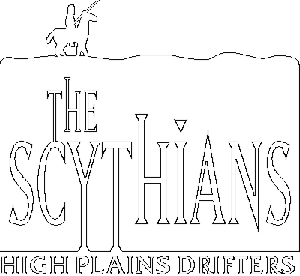

The Scythians were a barbaric group of pre-Common Era nomadic tribes who
are a fascinating example of an ancient cannabis using group. The Scythians
played a very important part in the Ancient World from the seventh to first
century BC. They were expert horsemen, and were one of the earliest peoples
to master the art of riding and using horse-drawn covered wagons. This
early high mobility is probably why most scholars credit them with the
spread of cannabis knowledge throughout the ancient world. Indeed, the
Scythian people travelled and settled extensively throughout Europe, the
Mediterranean, Central Asia, and Russia, bringing their knowledge of the
spiritual and practical uses for cannabis with them.
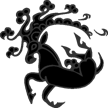 Scythian Society & Dress
Scythian Society & Dress
The Scythians (as the Greeks referred to them) or Sakas (as the Persians
knew them) are believed to have been of Iranian origin. They shared a
common language, and maintained well-used trade routes that connected their
many distant settlements. Although they were nomadic, the Scythians had a
single patriarchal sovereign that the different chieftains all paid tribute
to. This leader had an entourage of wealthy nobles who acted as his
courtiers, and his position was passed on to his son at his death.
The Scythians had no written language, so much of what is known about them
has been derived from the many precious and exquisitely crafted artifacts
found in their frozen tombs in Russia, Kazyktstan and the Eurasian
plains. These precious items included weapons, jewelry and clothing, and
were meant to follow the deceased into the afterlife. They can be viewed in
Russian museums, well preserved from their long stay in the frozen tombs.
The Encyclopedia Britannica describes the Scythian wardrobe as
follows:
Many Royal Scyths wore bronze helmets and chain-mail jerkins of the Greek
type, lined with red felt. Their shields were generally round and made of
leather, wood, or iron, and were often decorated with a central gold
ornament in the form of an animal, but other tribesmen carried square or
rectangular ones.
All used a double-curved bow, shooting over the horse's left shoulder;
arrows had trefoil-shaped heads made, according to date, of bronze, iron,
or bone. Arrows and bow were carried in a gorytos (bow case) slung from
the left side of the belt.
Their swords were generally of the Persian type, with an intricately
ornamented heart-shaped or triangular crosspiece. ...the sheaths were
often encased in gold worked into embossed designs and offset with paste
or ivory inlay and gems.
Their knives were of various shapes and lengths, some being curved in the
Chinese manner. They wore the dagger attached to the left leg by straps,
and many carried spears or standards surmounted by bronze terminals
depicting real or imaginary beasts.
The Scythian's horses were also outfitted in beautiful and ornate
costumes, and were seen ridden for the first time among many of the
peoples they descended upon.
Many of the Scythians had full body tattoos with extremely intricate
tribal designs, depicting both real and imaginary beasts as well as events
from their mythology. Looking like the forerunners of modern-day Hell's
Angels, the fierce appearance of the Scythian nomads had a formidably
terrifying effect on the people whose lands they invaded.
The astonishing victories of the Scythians brought them a great deal of
fame, and much of Western Persia fell under the rule of Scythian
chieftains. It has been recorded that they invaded Syria and Judea around
625 BC, and even reached the borders of Egypt where peace terms were
reached with them by the intimidated rulers of that kingdom.
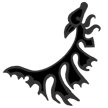 Equality in War
Equality in War
The act of war was one in which the Scythian women are said to have
participated in equally with the men. Scythian women were tattooed like
their mates, and the ancient historian Diordorus commented that Scythian
women 'fight like the men and are nowise inferior to them in bravery'.
It has been recorded that Scythian women had to kill three enemies in
battle before marrying, and that a mastectomy of the right breast was
performed on female infants so that their pectoral muscle wouldn't weaken
and they would be able to brandish a sword better!
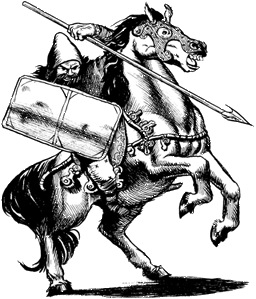 The Cimmerian Connection
The Cimmerian Connection
It was the horseback riding Scythians who overtook the fierce Cimmerian
infantry, which fought on foot and didn't have horses.
Most readers will probably be familiar with the Cimmerians as
the people who were later popularized in the famous fictional tales of the
displaced Hyperborean Era warrior, Conan the Cimmerian, by Robert E. Howard
and later L. Sprague DeCamp. The fierce horseback-riding raiders in the
scene at the beginning of macho director John Milius', Conan the Barbarian,
who rape and pillage the young Conan's tribe, are meant to depict the
ancient Scythians.
Cannabis and the Dead
Cannabis was an integral part of the Scythian cult of the dead, wherein
homage was paid to the memory of their departed leaders. After the death
and burial of their king, the Scythians would purify themselves by setting
up small tepee-like structures which they would enter to inhale the fumes
of hemp seeds (and the resinous flower calyxes surrounding the seeds)
thrown onto red-hot stones.
In a famous passage written in about 450 B.C., Herodotus describes these
funeral rites as follows:
...when, therefore, the Scythians have taken some seed of this
hemp, they creep under the cloths and put the seeds on the red hot stones;
but this being put on smokes, and produces such a steam, that no Grecian
vapour-bath would surpass it. The Scythians, transported by the vapour,
shout aloud.
It is most likely the seeds described by Herodotus were seeded
buds, and that the charred seeds found by archeologists are what was left
over from the burnt buds.
 Proving the Myth
Proving the Myth
Herodotus' ancient records of the Scythian hemp rites were once believed
to be mythical, but they were verified in 1929, with the discovery of a
Scythian tomb in Pazyryk, Western Altai, by Professor S. I. Rudenko. As
cannabis expert Ernest Abel explains in
Marihuana, the First 12,000 Years:
Digging into some ancient ruins near the Altai Mountains on the border
between Siberia and Outer Mongolia, Rudenko found a trench about 160 feet
square and about 20 feet deep. On the perimeter of the trench were the
skeletons of a number of horses. Inside the trench was the embalmed body
of a man and a bronze cauldron filled with burnt marihuana seeds!
Clearing the site further, Rudenko also found some shirts woven from hemp
fibre and some metal censors designed for inhaling smoke which did not
appear to be connected with any religious rite. To Rudenko, the evidence
suggested that inhalation of smoldering marihuana seeds occurred not only
in religious context, but also as an everyday activity in which Scythian
women participated alongside the men.
The Encyclopedia Brittanica describes the cauldrons found at these
Scythian burial sites as follows:
These cauldrons varied in size from quite small
examples to others weighing as much as 75 pounds. An overwhelming majority
have a solid base, shaped like a truncated cone, around which the fire was
heaped. The upper section is a hemispherical bowl... with handles (shaped
like animals) fixed to the rim opposite each other... at Pazyryk, small
cauldrons filled with stones and hemp seeds were found standing beneath
leather or felt tentlets with three or six supports.
It is known that sacrifices took place with the death of a Scythian king,
as the physical evidence collected by archeologists can attest to. For 40
days after the death of a king, the mourners would travel the country
conducting the king's dead body through the lands he had ruled in
life. After this the body was taken to a tomb for burial, where a massive
sacrifice took place, not only of horses, but of humans as well. The
king's wives, cupbearers and principal servants were destined to join him,
willingly or not, in the afterworld.
The Great Goddess
Two extraordinary rugs were also found in the frozen Scythian tombs. One
rug had a border frieze with a repeated composition of a horseman
approaching the great goddess Tabiti-Hestia, the patroness of fire and
beasts. She is depicted as holding the "Tree of Life" in one hand and
raising the other in welcome.
Tabiti-Hestia is the only deity who figures in Scythian art. Considering
the barbaric nature of these people it is interesting that she is a
female, but perhaps really not all that surprising, as many of the
peaceful goddesses became more fierce in the transition from matriarchy to
patriarchy.
In The Woman's Book of Myths and Secrets, Barbara Walker writes
about the Scythian religion.
The only deity shown in Scythian art was the Great Goddess, whom the
Greeks called Artemis, or Hestia or Gaea (The Earth)... Scythians were
governed by Priestess-Queens, usually buried alone in richly furnished
Kurgans (queen graves)...
The moon-sickle used in mythical castrations of God was a Scythian
weapon. A long-handled form therefore came to be called a scythe, and was
assigned to the Grim Reaper, who was originally Rhea Kronia [the old
crone] in the guise of Mother Time, or Death- the Earth who devoured her
own children. Scythian women apparently used such weapons in battle as
well as religious ceremonies and agriculture.
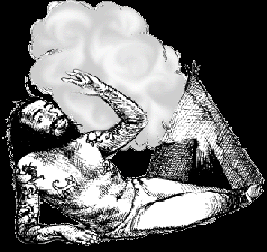 The Scythian Queens
The Scythian Queens
One thing that differentiates the tombs of royal Scythian queens from that
of the kings is the complete lack of brutal sacrifices.
In the 1994 November issue of High Times, staff reporter Bill Weinberg
reported on a more recent Scythian discovery:
The newest find is from the remote Altai mountains of Siberia-
specifically, from the archeological dig at Ukok, near where the borders
of Russia, China, Mongolia, and Kazakhstan meet. Russian scientists found
the 2,000-year-old mummified remains of a Scythian queen elegantly laid
out in white silk alongside horse harnesses, a mirror, dishes- and a small
ceremonial container of cannabis. The July 13 New York Times report on the
find says archeologists believe Scythian pot "was smoked for pleasure and
used in pagan rituals..."
The Enigmatic Enaries
Cannabis was not only used by the Scythians for relaxation and ceremonies
for the dead. These ancient nomads had a class of shaman-magicians called
the Enaries. These were ancient transvestites who uttered prophecies in
high pitched voices. This at first sounds bizarre, but was actually a very
common trait among shamans world wide. The Scythians believed that these
people, who had characteristics of both sexes, were somehow also living in
both worlds, and could travel between the two.
The Thracians
Of the groups directly influenced by the Scythian use of cannabis,
probably the most notable would be the red-haired, fair-skinned
Thracians. A Greek speaking nomadic tribe, the history of the Thracians is
closely tied to that of the Scythians, so that at times the two groups
would seem inseparable.
Herodotus wrote of the Thracian's ability at working hemp fibres, and
claimed that their clothes "were so like linen that none but a very
experienced person could tell whether they were of hemp or flax; one who
had never seen hemp would certainly suppose them to be linen."
Like the Scythian shamans, the Thracians used cannabis in a similar
manner. Dr Sumach explains in A Treasury of Hashish that:
The sorcerers of these Thracian tribes were known to have burned female
cannabis flowers (and other psychoactive plants) as a mystical incense to
induce trances. Their special talents were attributed to the "magical
heat" produced from burning the cannabis and other herbs, believing that
the plants dissolved in the flames, then reassembled themselves inside the
person who inhaled the vapors.
 Dionysus a Doper?
Dionysus a Doper?
The majority of scholars are in agreement that Dionysus, the famous Greek
God of Intoxication, was originally a Thracian god. Mircea Eliade,
probably recognized as the foremost authority on the history of religion,
has commented on the Thracian cult of Dionysus, and further he has
connected this worship with the use of cannabis:
Prophecy in Thrace was
connected with the cult of Dionysus. A certain tribe managed the oracle of
Dionysus, the temple was on a high mountain, and the prophetess predicted
the future in 'ecstacy', like the Pythia at Delphi.
Ecstatic experiences strengthened
the conviction that the soul is not only autonomous, but that it is capable
of union mystica with the divinity. The separation of soul from body,
determined by ecstacy, revealed on the one hand the fundamental duality of
man, on the other, the possibility of a purely spiritual post-experience,
the consequence of 'divinization'. Ecstacy could ...be brought on by
certain dried herbs or by asceticism.
In a foot note to dried herbs, Eliade commented on the use of "Hemp seeds
among the Thracians... and among the Scythians", and refers to some of the
ancient shamans as "those who walk in smoke" or Kapnobatai. The Kapnobatai
would be dancers and Shamans who used the smoke of hemp to bring ecstatic
trances.
The messages from the other world brought back by these ancient Shamans
was taken as authoritative advice by the ancient chieftains and their
tribes. In this sense, the Shamans acted as the conscience or mind of the
whole group.
 Mellowing with Time
Mellowing with Time
It could well be that in later times the cannabis smoke had somewhat
mellowed the Scythians, and their spiritual leaders directed them towards
becoming a more civilized people. The ancient Greek historian Ephorus wrote
in the fourth century BC that the Scythians 'feed on mares milk and
excel all men in justice'. His comments were followed in the first century
BC by Strabo, who wrote that 'we regard the Scythians as the most just
of men and the least prone to mischief, as also far more frugal and
independent of others than we are.'
Next Issue: A Hemp Heresy
Probably the most famous of the ancient Shamans who were directly
influenced by the Scythian technique of ecstacy through cannabis were
Moses, Isaiah, Ezekeil, and some of the other Old Testament Prophets and
kings. A grandiose claim? Is the Philosopher stoned? A Hemp Heresy? Join
'When Smoke Gets in My I' next month for an in depth look at cannabis
in the Old Testament.
BOOM SHIVA
 Scythian Society & Dress
Scythian Society & Dress

 Equality in War
Equality in War The Cimmerian Connection
The Cimmerian Connection The Scythian Queens
The Scythian Queens